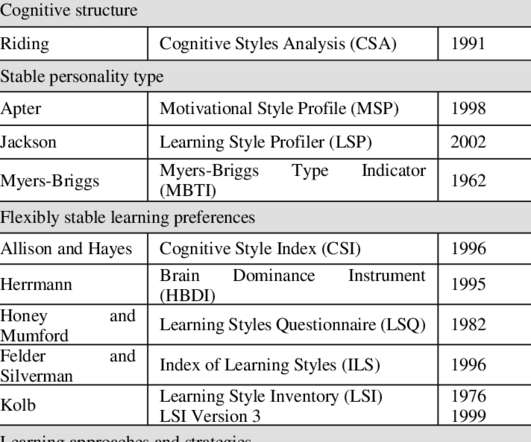A List of Brain-based Strategies to Create Effective eLearning
SHIFT eLearning
SEPTEMBER 2, 2014
There is a simple way to design effective eLearning courses about any subject: brain-based learning. This instructional approach was defined by Hileman in 2006 and has since inspired many “brain compatible designers” — those who seek to understand the principle and reasoning behind their teaching. B: Brain’s Time Clock.













































Let's personalize your content